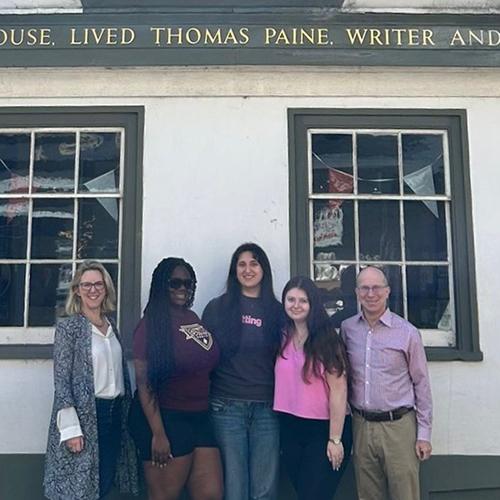Paper Conservation Campaign
The "paperless office" promised by the computer revolution has not materialized. In fact, annual consumption of office paper has nearly doubled since 1980, and it represents one of the fastest-growing components of the nation's waste stream.
Here at Iona, we have observed an increase in the use of paper in copiers, printers and computer labs. Preliminary research revealed that much of this usage may be unnecessary or accidental (e.g., one-sided copying instead of back-to-back; printing more pages or copies than expected, etc.).
In an effort to reduce the environmental and financial impact of paper waste at Iona, the Environmental Concerns Committee, IT Department and Ryan Library launched a campus-wide Paper Conservation Campaign. As an added incentive for students, faculty, staff and administrators to adopt a culture of conservation and waste prevention, the project was registered with the National Wildlife Federation Campus Ecology Program.
Iona was awarded a Certificate of Recognition for its Paper Conservation Campaign for 2002 and 2003. The case study can be found in the online NWF Campus Environmental Yearbook.
Eliminate Unnecessary Copies and Printouts
- If you only need a small piece of information from an email or website (e.g., a name and phone number), write down that information instead of printing off the entire document.
- Post announcements in central locations.
- Substitute email or phone messages for written memos.
Share and circulate longer documents (use "routing slip" with check-offs). - Email online journal articles or webpages to yourself, and review for relevance and importance before printing.
- Don't automatically print "all" pages of a document if you aren't sure of its length. Use "print preview" and then decide whether and how much of the document you need to print.
- Be patient while waiting for a job to print. If you hit the print key again, you will get two copies, etc.
Further Reduce Paper Use
- Single space documents whenever possible.
- Set narrower margins (1" all around or less).
- Use "print preview" and adjust margins to avoid pages with little text.
- Try to do as much "online" editing of documents as possible, and then only reprint the pages that have changes on them.
- Use both sides of paper:
- Always request two sided copying
- Use duplex printers where available (e.g., Ryan Library)
- Print rough drafts on the blank side of paper that would otherwise be discarded. NB: Printed paper can safely be re-used in inkjet printers, but NOT laser printers.
- Turn your ordinary inkjet printer into a duplex printer! It's easy:
- Go to File: Print (as you normally would). A gray "box" will open, with printer, print style, print options, etc.
- Click on the "properties" button in the upper right hand-side of the gray box.
- Click on the file folder tab along the top that says "Features." You will see a Two-sided printing option: none, book or tablet.
- Click "Book" and "OK" and return to the Printer box. Proceed as you normally would (pages, number of copies, etc.).
- The printer will print the odd numbered pages, and then pause, and a diagram will pop up instructing you to remove the printout and re-feed (print side up) to print the second sides (even numbered pages).
Faculty Recommendations
Consider alternatives to distribution of printed handouts, including putting materials on reserve at the library, directing students to online sources, posting them on course websites, or creating course packets that can be purchased by students.
For exams, syllabi and other materials that you create, try to fit as much as possible on each page (see suggestions above), and use two-sided copying. Remember: A single-sided, double-spaced document uses four times as much paper as a double-sided, single-spaced document.
If you distribute copies of PowerPoint slides, be sure to use "handout" printing option, with at least 4-6 slides per page. Experiment with grayscale or pure black and white print to save ink.
Encourage students to reduce paper use, by allowing submission of assignments on disk or via email, or printed on two sides of the page.



